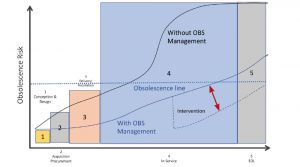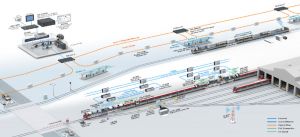December saw another successful International Maintenance Conference (IMC), with over 1,100 participants from 41 countries. Part of the conference included the Transit Asset Management (TAM) forum, held the first day of the conference. Presented in association with the Rail Reliability and Asset Management Roundtable, the TAM forum was designed as an opportunity for agencies to share simple and practical approaches that they can put to work immediately using asset management (AM) and Industrial Internet of Things solutions (IIoT). The forum was well attended and presenters shared some highly interesting progress stories with attendees.
Overview of Presenters’ Key Shares:
Passenger/commuter agencies are facing many challenges that AM and IIoT solutions can address:
- Improving safety
- Managing aging infrastructure
- Improving customer service
- Controlling maintenance costs
- Designing for growth
- Improving reliability
- Driving maintenance fundamentals
- Compliance with TAM/FAST regulations
The American Society of Civil Engineers estimates $4.6 trillion to be spent by 2025 in order to bring U.S. infrastructure to an acceptable standard. Less than half that amount has been allocated so far.
- Much of the Northeast Corridor infrastructure is beyond its useful live. Eighty-five percent of basic preservation and improvement projects are on hold pending funding.
- Transit in the U.S. continues to grow and is adding new lines and networks every year. Yet, the symptoms of overdue maintenance and underinvestment of existing agencies are not being addressed.
Managing the asset obsolescence challenge requires a specific focus by agencies to ensure AM/IIoT designs drive extending existing asset life, as well as improve new asset lifecycle management.
- “The goal of obsolescence (OBS) management is to achieve improved maintainability of services while ensuring best value and overall reduction in whole lifecycle costs.” --- John Gariti, Long Island Railroad, IMC 2017
- Successful OBS requires structured design integration into computerized maintenance management systems (CMMS), IIoT and purchasing systems.
- Crucial in the OBS assessment is understanding, in measurable terms, whether the asset is capable of performing at its designed level and ensuring an asset does not pose a known unacceptable safety risk.
- Due to the extensive asset aging issue, OBS prioritization and criticality analysis must be completed early in the design process.

Figure 1: Typical obsolescence risk in the asset lifecycle
(Courtesy: John Gariti, Long Island Railroad and Jesse Rothkopf, Life Cycle Engineering)
A serious issue for transit rail operators is a lack of basic information about their legacy assets, such as their condition, history, criticality, replacement lifecycle and total cost of operations of the asset, in terms that are quantifiable and mutually agreed upon.
- Growing consensus around the benefit of introducing a generational model to address lack of information
- Added benefit of improved management of the long-term investment and related risk expectations of capital replacement within their organizations
- Demand by operators for holistic visual asset “data halos” vs. component level data streams
- Digital configuration enables managing process and information changes from cradle to grave; many new governmental regulations, like positive train control (PTC), now mandate deep, accurate configuration management
Investing in AM/IIoT solutions has seen rapid acceptance by agencies over the last 12 to 18 months, compelled by:
- Compliance with the spirit of TAM/FAST regulation requirements;
- Increasing technology-oriented regulatory and safety environment;
- Driving maintenance fundamentals to include improving the reliability of assets or improving asset availability while optimizing, or at least understanding, the asset cost of operation;
- Local, state and federal governments demanding greater operating efficiency; McKinsey & Company research has shown that emerging technologies could boost productivity by 25 to 30 percent.
The marriage of digital technologies and infrastructure has given rise to smart infrastructure.
Key technologies required for tomorrow’s agency management include:
- Asset management (i.e., CMMS) and geographic information system (GIS);
- Program/change management platforms;
- Intelligent sensing and communicating devices in your infrastructure and on your assets;
- Security;
- Mobility/communication systems;
- 3-D virtual design (i.e., digital twin) technologies;
- Machine learning/algorithmic-based, predictive enabled, decision-making solutions;
- Advanced analytics/dashboard data or data visualization.

Figure 2: “The marriage of digital technologies and physical infrastructure has given rise to smart infrastructure.” --- Michael Salvato, Director and Program Executive, Enterprise Information and Asset Management, IMC-2017 presentation
Increased AM/IIOT technology integration has organizational implications:
- New requirements on workforce planning and new training and skills needed to accelerate the “speed of transformation;”
- New suites of asset management tools and organizational and production structures increasingly realigned to support maintenance fundamentals;
- Broader responsibilities for “tomorrow’s” technologically enabled asset manager, who must operate the asset, make the asset safe and long-lasting through good maintenance practices, and make the most out of today’s dollar.
The agency AM/IIoT journey requires extensive planning, change leadership and program management:
- Needs a shared vision, key performance indicators (KPIs) and a clear understanding across agency personnel of what success means;
- Comprehensive and enterprise approach to system integration beyond maintenance to include all aspects of the customer, the employee and the asset experience;
- Designed architecture that promotes efficiency and effectiveness of its business processes, as well as the utilization of the assets it is managing – this means a strong reengineering or industrial engineering approach embedded into the architecture;
- Formal program and change management teams to ensure delivery timelines are met and communications of progress, plans and changes are known through the organization.
The transit/passenger agency of the future will consist of smart designed stations and platforms, and self-aware and self-managing equipment on connected networks that are all connected into control centers or hubs, thus leveraging artificial intelligence (AI) and learning management systems to deliver high levels of customer service at an optimized cost per passenger.
Thanks go out to the presenters at the Transit Asset Management forum for sharing their thoughts, experiences and visions of how agencies and solution providers are working together to address the issues facing America. As Michael Salvato, director and program executive, Enterprise Information and Asset Management, concluded in his presentation: “The challenges facing America require much more than incremental improvements. They require reinventing the infrastructure industry. Rebuilding America’s crumbling infrastructure requires a major paradigm shift.”
The 2018 Transit Asset Management Forum is planned for
IMC-2018, the 33rd International Maintenance Conference, December 10-14, 2018. If you are interested in learning more or want to be part of the transit management solution discussions at Reliabilityweb.com, contact: crm@reliabilityweb.com.






